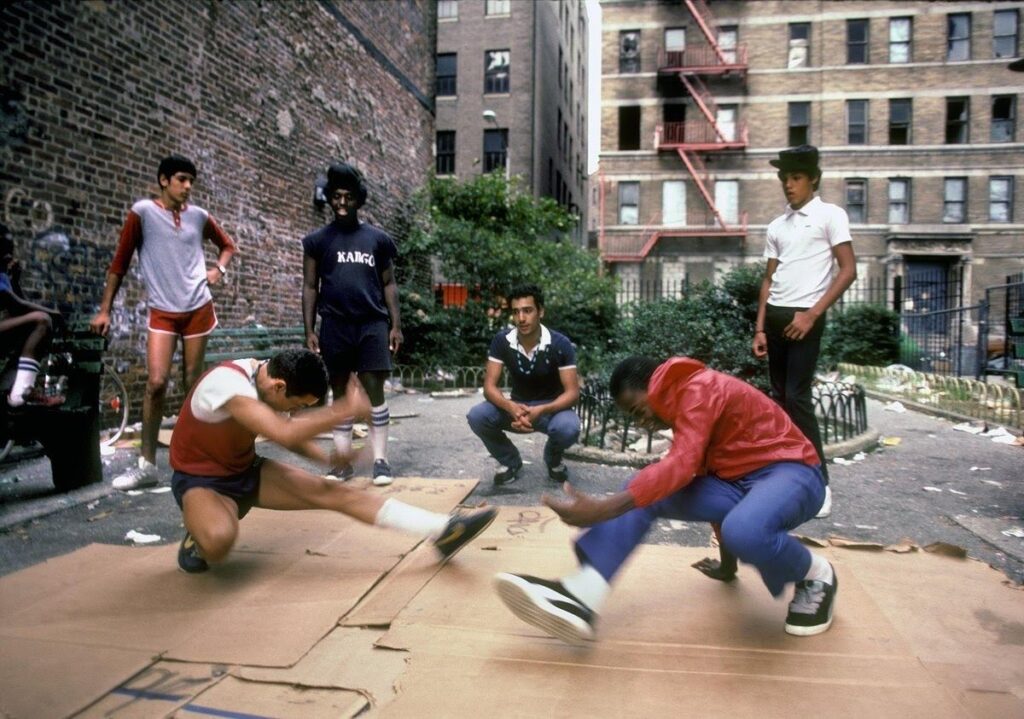History of Breakdancing: Origins and evolution to the present day.

Discover the history of breakdancing, its origins and evolution To this day, breaking is one of the most iconic urban dances in hip-hop. From its origins on the streets of the Bronx by children to its inclusion in the Olympic Games, breakdancing has evolved enormously. In this article, we'll explore its history and how it became a global phenomenon.
Origins of Breakdancing: The Birth of a Movement
The Bronx in the 1970s: The Historical Context
In the 1970s, the Bronx, New York, was a neighborhood marked by economic crisis and the rise of youth gangs. In this environment, the community's young people, mostly boys and girls, found a form of expression and escape in music and dance.
One of the key elements of this emerging culture was Hip-Hop, which included four fundamental pillars: DJing, MCing, graffiti, and breaking. It was during this decade that breakdancing began to take shape, without knowing what its global significance would be.
The role of DJ Kool Herc and street parties
DJ Kool Herc is considered the father of hip-hop and a pivotal figure in the history of breakdancing. At his parties, he would extend the breaks in songs, allowing the dancers (b-boys and b-girls) to improvise their moves over the more energetic rhythms. These parties, known as block parties, were home to a large Latino community at the time, where they danced. In fact, some Top Rocks moves are directly influenced by them, such as the Salsa Step.
The influence of the first B-Boys y Bgirls
Some of the first breakdancing groups were the Rock Steady Crew and the New York City Breakers, which helped solidify the style. B-boys like Crazy Legs, Ken Swift, and Frosty Freeze were pioneers in creating iconic moves.
Evolution of Breakdancing in the 80s and 90s
The commercial explosion and rise of breakdancing
In the 80s, Breakdancing became popular worldwide thanks to films like Beat Street y Breakin’Competitions and mass events emerged, elevating dance to a global spectacle.
The temporal decline and its underground rebirth
In the late 80s, breakdancing lost some of its popularity in the media because other dances began to emerge more strongly and become more fashionable, but the culture remained more or less alive in underground communities. In the 90s, with the emergence of new generations of b-boys and b-girls in Europe, such as Bboy Storm, who traveled to New York to explore the world of breaking and share it with the people there. But when he arrived, they were barely dancing, and it was partly thanks to him who brought his style and level to the United States, which made the same bboys and bgirls see him and were motivated to take up breaking again and take it to a high level. Later, breakdancing resurfaced with competitions such as the Battle of the Year and the Red Bull BC One.
Breakdancing in the 21st Century: From the Street to the Olympic Games
The Globalization of Breaking
Thanks to the internet and social media, breakdancing has spread worldwide. It's now practiced in almost every country and city in the world, and professional dancers and athletes take the dance to extreme levels of competition.
The arrival of Breaking at the Olympic Games
One of the most important milestones in the history of Breakdancing is its inclusion in the Paris 2024 Olympic GamesThis recognition consolidates Breaking as a dance sport and an art form that transcends generations.
The Future of Breakdancing: Where Are We Going?
Innovation in movements and styles
Every year, new movements and fusions with other dance and acrobatic styles emerge, allowing breakdancing to continue to evolve.
Career opportunities for b-boys and b-girls
Today, breaking is not only a passion but a profession for many. Opportunities exist in the entertainment industry, teaching, and international competitions, also through sponsors such as Nike, Reebok, Red Bull, Monster, and more.
Conclusion
Breaking, born in the Bronx in the 1970s, has undergone a fascinating journey from being a form of resistance and expression in a neighborhood marked by economic hardship to becoming a globally recognized discipline. What began as a creative response to social and economic adversity has transformed, over the decades, into a platform for artistic expression that has crossed borders and united people of different cultures.
The history of breakdancing, Its origins and evolution also reflect the power of urban culture to influence society, leaving its mark on music, fashion, film, and, of course, dance. During the 1980s and 1990s, the commercial boom of breakdancing cemented it as a fundamental part of pop culture, generating not only competitions but also a global movement that inspired generations of young people to express themselves through this art. Today, breakdancing continues to evolve and adapt, yet remains true to its original essence of creativity, style, and challenge.
The recognition of Breakdance as an Olympic discipline in the coming Olympics This is the latest chapter in this rise to fame. This achievement underscores the cultural and social impact this dance has had around the world. Breakdancing will undoubtedly continue to evolve, inspiring new generations and proving that art and urban culture have the power to connect people, regardless of their background or circumstances.
Ultimately, breakdancing is a clear example of how a form of expression born in a specific context can transcend and become a universal language that celebrates creativity, discipline, and passion.
📢 Join the Breakdance community! If you want to learn more about the history and culture of breaking, follow us on social media and share this article with other hip-hop enthusiasts!
If you liked the history of breakdancing, its origins and evolution and want to learn the 5 basic steps of breaking, you can learn them here!